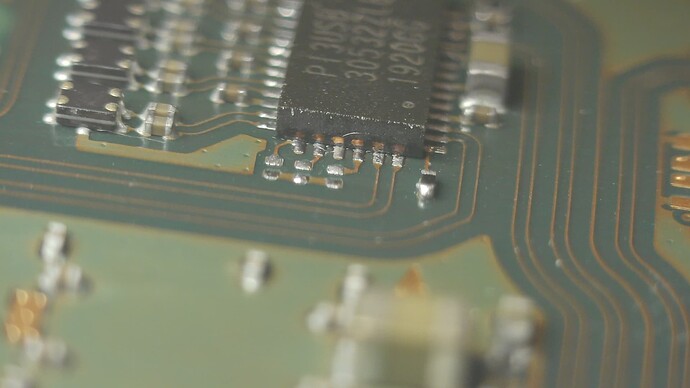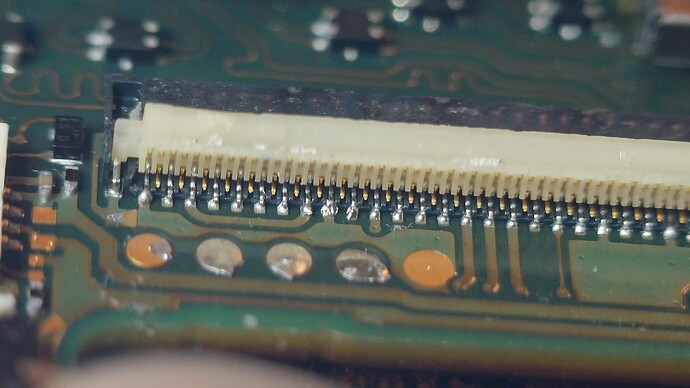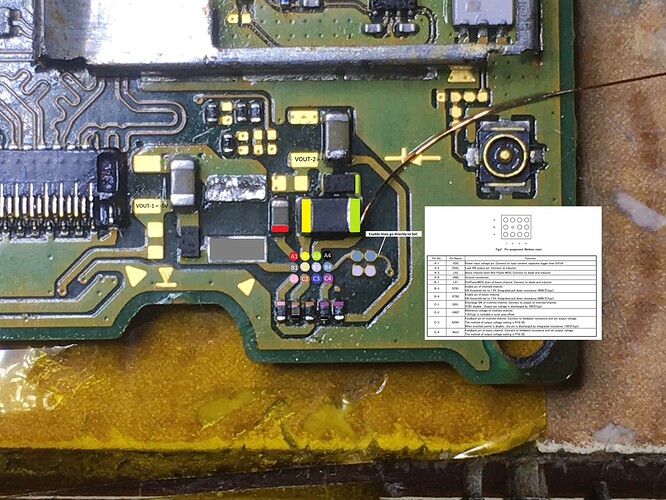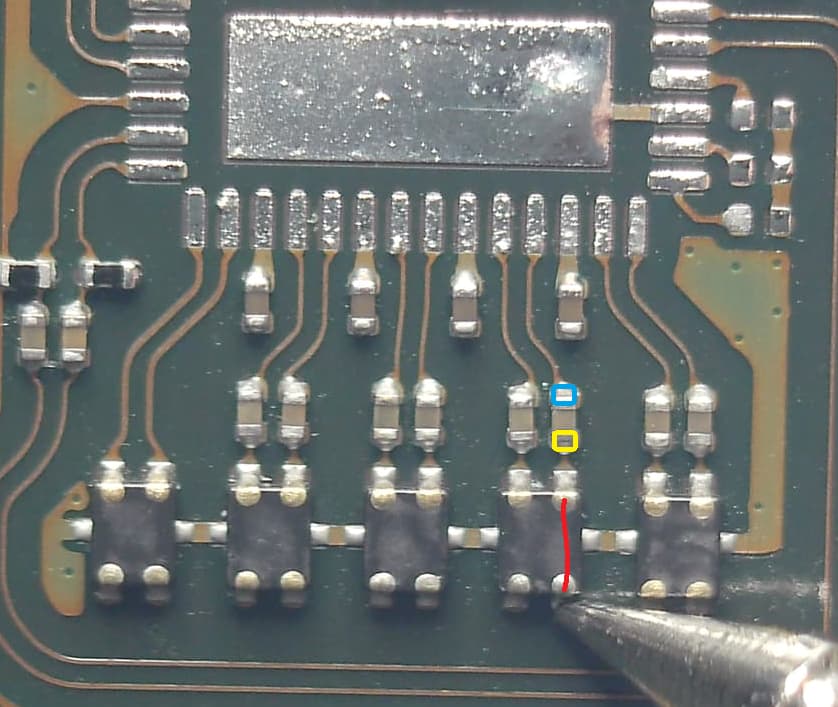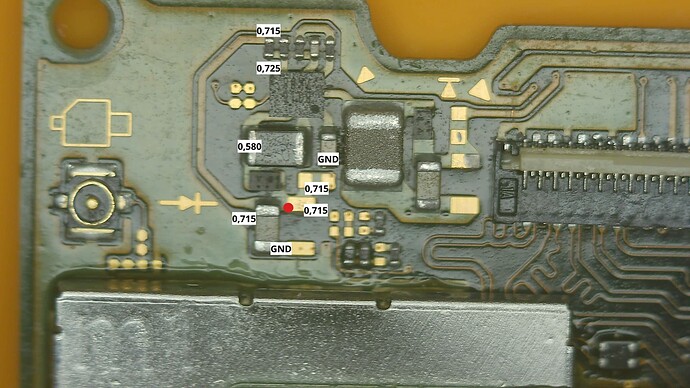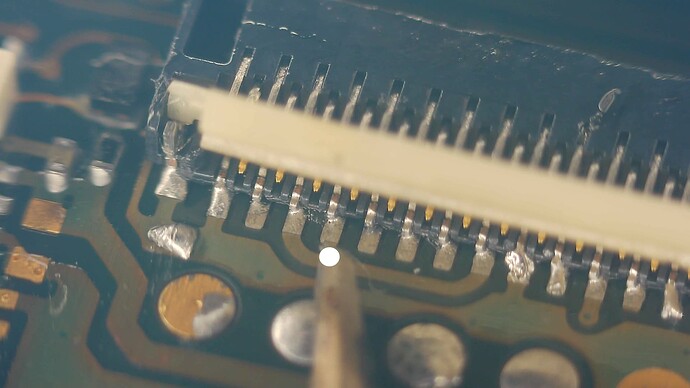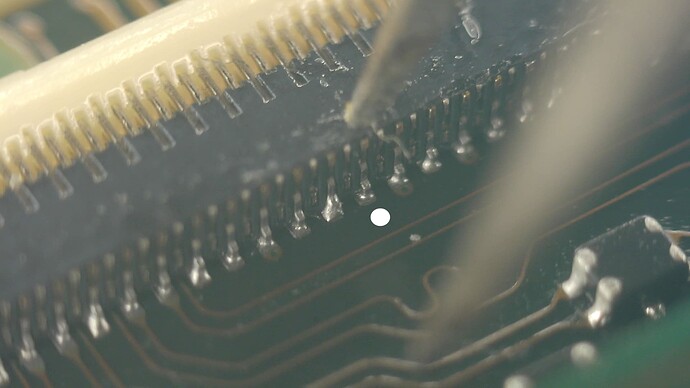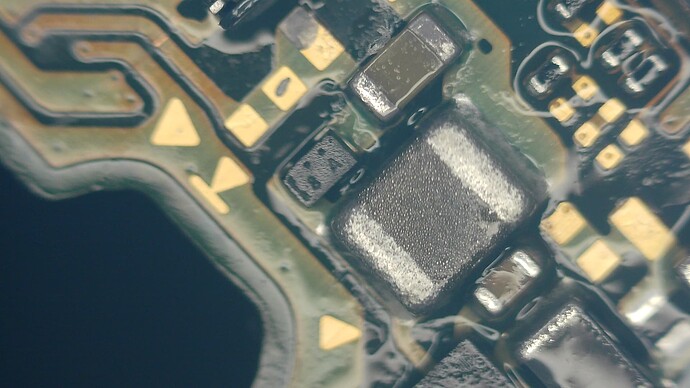Hi everyone,
hope someone can help me like last time when I had to replace the P13USB. This time my nephew told me that he get no signal while in dock mode. So I opened it up and replaced the P13USB once more. First it didn’t work, because I guess the P13USB was off for one PIN on only one side (short side where the dot is). Now it looks good:
I did it again with the same chip and now dock mode works. But while assembling it and testing it several times I noticed that in handheld mode the LCD stays black.
Then I saw, that the LCD connector have bend PINs. I guess I damaged it and now the question is what else I did damage. After replacing the LCD connector I still have a black screen. The backlight goes on but the screen stays black.
I never replaced a connector before, but I guess I managed to put it on decent enough.
This is the new connector. The back looks good:
The front is only okayish:
But I guess the connector isn’t the problem?!?
I found various topics in this forum about the 8316 and this picture:
VOUT-1 and VOUT-2 are +0.022 and +0.156V in my case.
The “enable lines” have 1.8V and the A1 connected capacitor got 4V. I also unplugged the battery and measured 358 Ohm on VOUT-1 and 7.92 kOhm at VOUT-2. I’ve a working Nintendo Switch at hand which measures around 357 Ohm on VOUT-1 and 7.12 kOhm on VOUT-2. Also both show -5.4V at VOUT-1 and +5.4V at VOUT-2. Thus the values seems to be comparable. At A1 the working Switch has 3.7V.
So I don’t know how to process further. What does 0V on both VOUT really mean? Is the 8316 broken?
Any help would be much appreciated.
